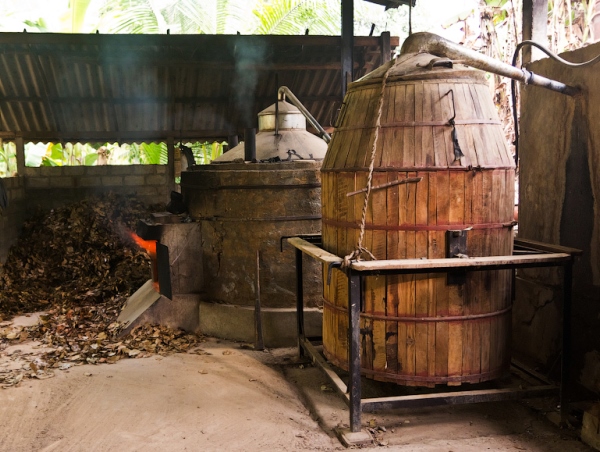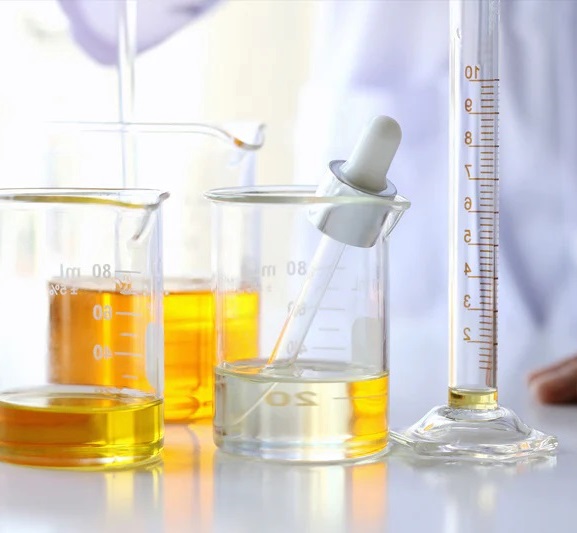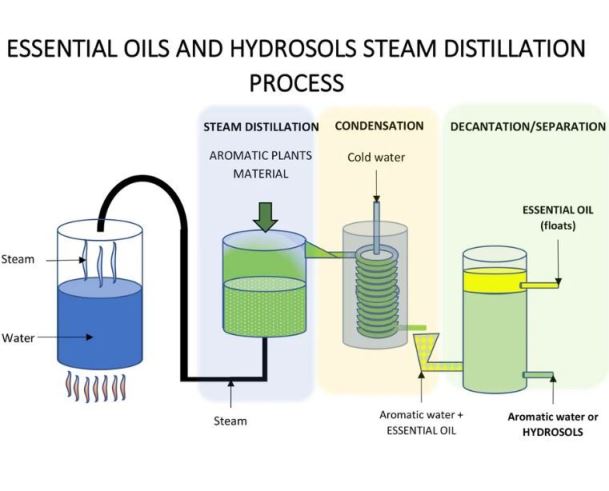
Extraction Technologies
We use two core methods for extracting our botanicals. These are:
• Supercritical CO2 Extraction
• Steam Distillation
Our processing and extraction technologies are designed to bring the very best that each of these technologies offers in delivering the various components of a botanical ingredient for use in consumer end products. Each brings a level of efficiency and cost to delivering the desired components that can be compared and evaluated for their effectiveness.
From a product quality standpoint, it offers gentle treatment of high value raw materials at temperature levels substantially below those used in some chemical solvent extraction operations, in the absence of oxygen. Both of these end products are untouched by chemical solvents and stay as ‘natural’ as they were before extraction.
The case for Supercritical CO2 Extraction
Efficient; Clean; Safe; Versatile; The superior method for botanical extraction.
Supercritical CO2 Extraction [SCFE] is widely regarded as the ‘gold standard’ as it allows the creation of pure, clean, quality oil that is safe to produce with little-to-no post-processing.
Relatively new in botanical extraction technology, supercritical CO2 extraction [SCFE] – often conducted under very high pressure – is becoming more extensive in use because of a number of significant benefits that it offers. This is particularly the case in the production of high value/high efficacy Nutraceuticals.
CO2 offers the ability to “tune” the extraction process, especially with a system that will separate constituents during an extraction. It is possible to target specific compounds, like terpenes (terpenoids) and different Phytocannabinoids through different operational parameters. CO2 is also a sanitising agent, prolonging shelf life, and, with the proper system and environment, yields food and medical grade oils.
Supercritical CO2 fluid extraction (SCFE) is a safe, clean, method for delivering a pure, unaltered, consistent-yet-flexible product and a highly-versatile technique of extracting plant botanicals, spices and hops used for 'high-value' Nutraceutical ingredients.


Benefits of CO2 Extraction
Supercritical CO2 Extraction is clean, green technology!
First and foremost, CO2 is a naturally occurring compound; our bodies even produce it. Carbon dioxide is also one of the safest non-polar solvents. The conditions that permit carbon dioxide to change from fluid to supercritical require a lower temperature meaning less risk of damaging the natural compounds in in the plant material. The result is a cleaner oil that is safer to ingest than products that use solvent extraction.
It is an appealing way to extract phytocannabinoids because there is a guarantee of no residual solvent present. As you don’t expose the plant to extreme temperatures, it retains its phytocannabinoid and terpene profile, also offering a more flavorful product.
While the process is very expensive, it is also highly efficient and a more environmentally-friendly method than most others. It acts as a cleaning agent, so mildew, mould, and microbial bacteria die during the extraction process.
From a production perspective, it is an environmentally friendly process and offers both worker safety and no removal issues. Industries such as pharmacology, food, and cosmetology already use supercritical CO2 extraction.
From a consumer standpoint, supercritical CO2 extracted products hit on a number of important trends. They can be marketed as ‘clean’ all-natural and organic products. They are devoid of impurities and residues which can resonate with the safety concerns of consumers because they offer some of the highest efficacy profiles of any extracted products on the market.
Ultimately, Supercritical CO2 Extraction is clean, green technology!
Steam Distillation
Steam distillation is used for the isolation of antioxidant and antimicrobial compounds from herbs and species such as clove, cinnamon, black pepper, nutmeg, rosemary etc. It is a multistage continuous distillation process where steam is used as a stripping gas to extract the oils. Steam is directed through the plant material.
The mixture of hot vapours is collected and condensed in order to produce a liquid in which the oil and water form two distinct layers. One of these layers is essential oil, which contains oil-soluble compounds, and the other is a hydrolysate or hydrosol, which contains water-soluble components.
As the steam is under pressure, the temperature can be carefully adjusted to provide the maximum rate of extraction with minimum thermal decomposition.
Although polar compounds of essential oil are lost in both the aqueous fraction of the distillate and the water in the still, steam distillation is still used extensively for essential oil extraction.


Benefits of Steam Distillation
The steam distillation technique is one of the distilling processes that is suitable for the distillation of heat-sensitive compounds.
The main advantage of steam distillation over conventional distillation is that the steam distillation procedure is carried out at lower temperatures and components can be separated from a mixture below their decomposition point.

